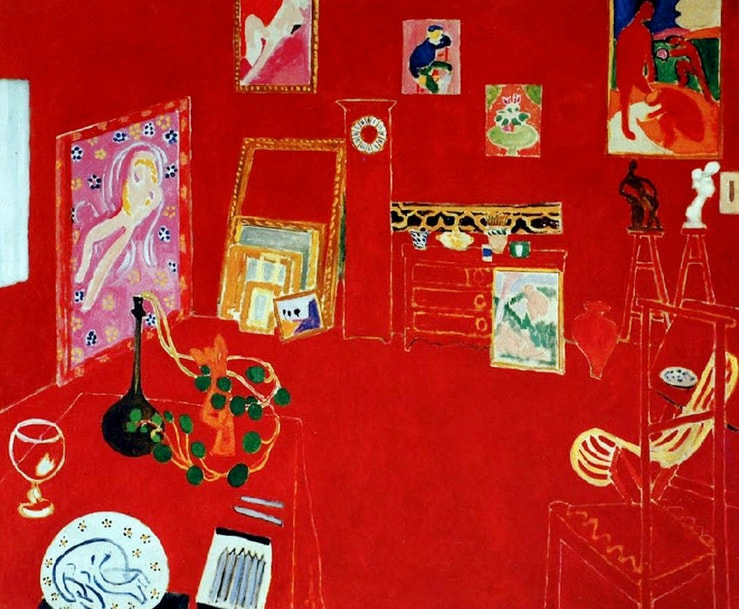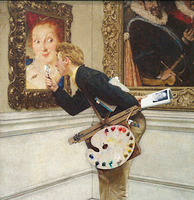|
Henri Matisse, Black Philodendron and Lemons, 1943; © Succession H. Matisse / BONO, Oslo; photo © Øystein Thorvaldsen / Henie Onstad Kunstsenter (HOK), Norway. The original of Matisse's Philodendron Noir et Citrons isn't seen often, so the reproduction below is the most well-known version. Unfortunately, a quick comparison shows that the coloring has been changed, and there's a newly imposed yellowish glare, more intense than in the genuine painting. The image above comes from a 2015 exhibition at the HOK in Norway, where the public had a rare opportunity to view the work in person. The show was titled "In Search of Matisse," and, among other things, examined the history of looted art and artifacts, spotlighting another Matisse painting that had recently been the subject of a highly publicized controversy. Based on the museum's press information about the exhibit, it doesn't appear that Citrons was one of the seized paintings. Most likely the piece simply provided additional perspective on Matisse and his work. Altered version of a painting by Henri Matisse.
0 Comments
Henri Matisse, The Red Studio, 1911; ©Succession H. Matisse / Artists Rights Society (ARS), New York; Museum of Modern Art (MoMA), New York This is an unusual reversal. Despite its title, "The Red Studio" by Matisse actually looks a bit brownish in real life. The photo above shows the painting on display at the Museum of Modern Art in New York. Toward the right, you can see a colorful Chagall, which tells us that the sienna tones of the Matisse are probably accurate. The altered version below — probably an enhanced photo — has brightened and intensified everything, most likely in a wrong attempt to introduce the bright primary hues that most people associate with Matisse. Altered version of a painting by Henri Matisse. Corrections or suggestions?
Henri Matisse, Le Rêve (Figure Dormant, Fond Bleu), 1935; © Succession H. Matisse; photo credit: © Bertrand Prévost - Centre Pompidou, MNAM-CCI/Dist. RMN-GP. There are relatively few elements in this Matisse painting, which makes it a good candidate for a modern reproduction. Even so, if the sketchy version below is a recently created copy, the contemporary artist clearly wasn't able to capture the essential quality of the original. The newer version might also be the result of an extreme photo edit, but in any case, the authentic work glows with a soft, dreamlike quality — so fitting to the subject — that the modern version lacks. Usually called Le Rêve (The Dream), this piece is also known as Figure Dormant, Fond Bleu (Sleeping Figure With a Blue Background). Altered version of a painting by Henri Matisse. Henri Matisse, "The Terrace, Saint-Tropez," 1904; © Succession H. Matisse / Artists Rights Society (ARS), New York; Isabella Stewart Gardner Museum. The reproduction below, possibly a digital variation, is a good example of altered art images that have been tinted a particular color, without any obvious purpose. If an otherwise natural scene looks as though you're seeing it through colored glasses, it's probably an altered copy. In addition to misrepresenting the artist's original colors, the process also removes a lot of the detail, tends to flatten the image, and blurs the the contrast between elements. Altered version of a painting by Henri Matisse. Corrections or suggestions?
|
REAL or REPRO?
A well-researched art resource that can help you find accurate images and spot altered copies. 100+ listings and growing daily. Browse at random, or search for something specific. Special requests are welcome.
Categories
All
Archives
January 2021
Disclaimer: This blog is intended for entertainment purposes only. Although every effort has been made to verify the accuracy of the information provided, the material included here should in no way be considered the final authority on any issues discussed in the text.
|












 RSS Feed
RSS Feed